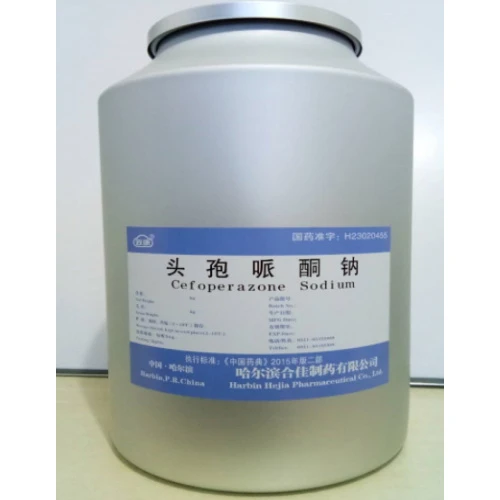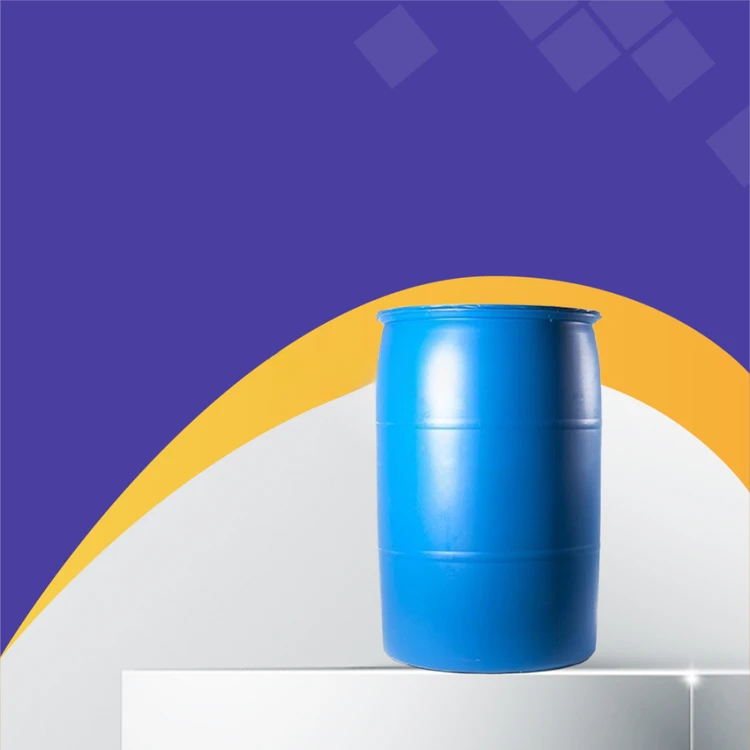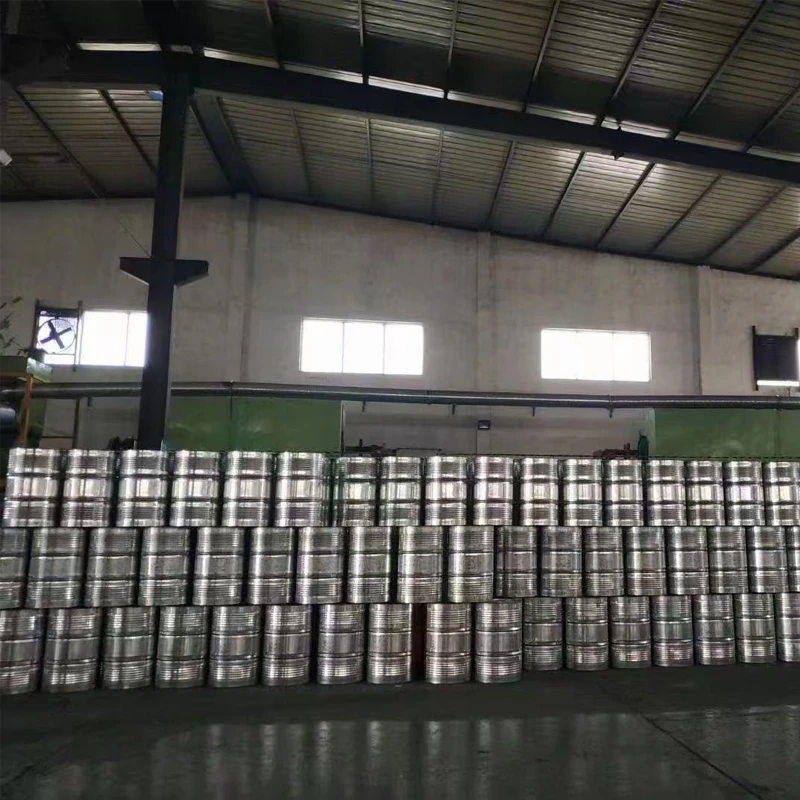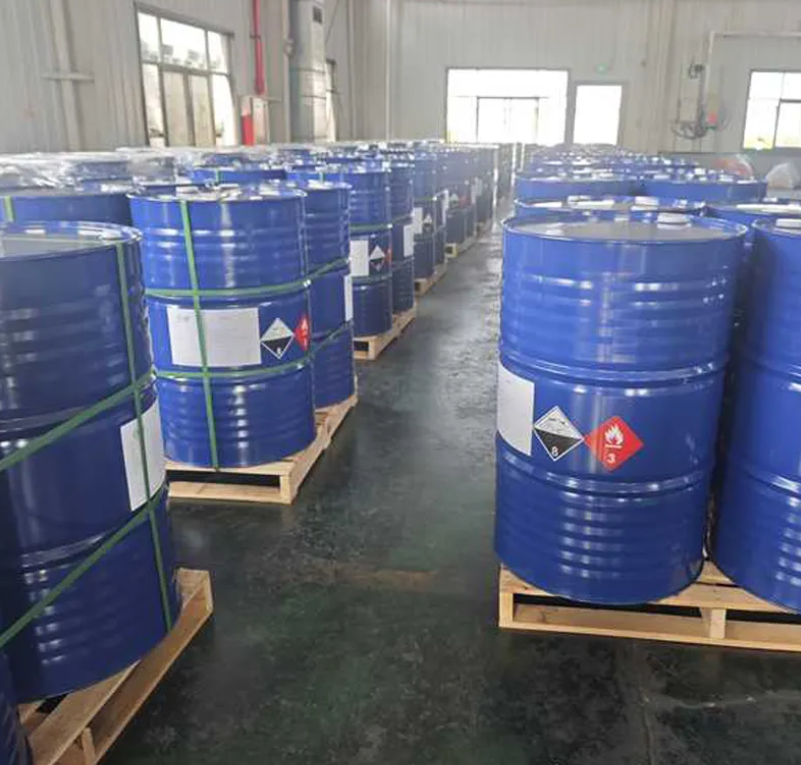Unlocking Performance: The Critical Role of Hegrecat PMDETA in Modern Polymer Chemistry
In the rapidly evolving landscape of polymer science, efficiency, performance, and sustainability are paramount. The global polyurethane (PU) market, projected to reach USD 95.5 billion by 2028, growing at a CAGR of 4.5%, is driven by increasing demand for high-performance insulation, lightweight automotive components, and versatile coatings. At the heart of this innovation lies the catalyst—a small-volume component with a massive impact on reaction kinetics and final product properties. This is where Hegrecat PMDETA (Pentamethyldiethylenetriamine) CAS: 3030-47-5 emerges as a pivotal solution.
Hegrecat PMDETA, a highly active tertiary amine catalyst, is meticulously engineered to optimize both the gelling (urethane) and blowing (urea) reactions in a wide range of polyurethane formulations. Its unique molecular structure, featuring three sterically unhindered nitrogen atoms, provides exceptional catalytic power, enabling faster cycle times, improved foam morphology, and enhanced physical properties. As industries push for greater energy efficiency and reduced environmental impact, the role of a high-efficiency catalyst like PMDETA becomes more crucial than ever.
Global Polyurethane Market Demand by Application
Technical Specifications: A Deep Dive into Hegrecat PMDETA
Understanding the technical parameters of a catalyst is essential for formulators to predict its behavior and unlock its full potential. Hegrecat PMDETA (Pentamethyldiethylenetriamine) CAS: 3030-47-5 is produced under stringent quality controls, ensuring batch-to-batch consistency that our clients rely on for their critical applications. Below is a comprehensive table of its key specifications.
| Property | Specification | Significance in Application |
|---|---|---|
| Product Name | Hegrecat PMDETA | Brand name ensuring Hejia Chemical's quality standards. |
| Chemical Name | Pentamethyldiethylenetriamine | Systematic name defining the molecular structure. |
| CAS Number | 3030-47-5 | Unique identifier for chemical substance registration. |
| Molecular Formula | C9H23N3 | Dictates molecular weight and stoichiometric calculations. |
| Molecular Weight | 173.30 g/mol | Influences volatility and reactivity. |
| Appearance | Colorless to light yellow transparent liquid | A primary indicator of product purity. |
| Purity (Assay by GC) | ≥ 99.0% | High purity ensures predictable catalytic activity and minimizes side reactions. |
| Moisture Content | ≤ 0.5% | Low moisture prevents unwanted reactions with isocyanates, ensuring foam integrity. |
| Boiling Point | 198 °C (388.4 °F) | Low volatility keeps the catalyst in the reaction matrix. |
| Density (at 20°C) | 0.83 g/cm³ | Essential for accurate dosing and formulation calculations. |
| Viscosity (at 25°C) | 2 mPa·s | Low viscosity ensures excellent miscibility and easy handling in automated systems. |
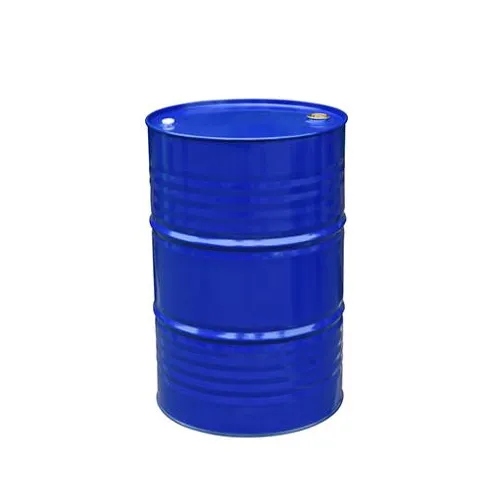
The Hegrecat Advantage: Precision Manufacturing Process
The superior performance of Hegrecat PMDETA is not accidental; it is the result of a meticulously controlled and optimized manufacturing process that adheres to ISO 9001 quality management standards. Our process ensures the highest purity and consistency, translating directly into reliable performance for our customers.
From Raw Material to Final Product: A Journey of Precision
1. Raw Material Sourcing
High-purity Diethylenetriamine (DETA) and methylating agents are sourced from certified suppliers. Rigorous incoming QC checks are performed.
2. Controlled Alkylation
The synthesis occurs in a closed-loop reactor under precise temperature and pressure control via the Eschweiler–Clarke reaction, ensuring complete methylation.
3. Multi-Stage Purification
The crude product undergoes fractional distillation to remove impurities, unreacted materials, and by-products, achieving ≥99% purity.
4. Final QC & Analysis
Each batch is tested using Gas Chromatography (GC) and Karl Fischer titration to verify purity and moisture content against our strict specifications.
Key Process Highlights:
- Material Integrity: We utilize materials resistant to amine corrosion for all reactors and piping, ensuring no metallic contamination.
- Advanced Synthesis Control: Our automated Distributed Control System (DCS) minimizes human error and guarantees process repeatability, a key factor in achieving batch-to-batch consistency.
- Rigorous Testing Standards: Every batch of Hegrecat PMDETA CAS 3030-47-5 comes with a Certificate of Analysis (COA) detailing its exact specifications.
- Optimized for Longevity: The product is packaged in nitrogen-purged, sealed container111s to ensure a shelf life of up to 24 months when stored correctly.
Technical Advantages & Competitive Edge
Choosing the right catalyst is a strategic decision. Hegrecat PMDETA offers a distinct set of advantages that translate into improved efficiency, better product quality, and a stronger bottom line.
Exceptional Catalytic Activity
The sterically unhindered nitrogen atoms in PMDETA provide strong promotion of both gelling and blowing reactions, enabling reduced catalyst loading levels and faster demolding times, boosting production throughput.
Improved Foam Flowability
Especially in complex molds for rigid foam applications, PMDETA ensures the liquid foam mixture maintains low viscosity for longer, allowing for complete mold filling and preventing voids or density gradients.
Reduced Foam Friability
It helps in creating a more uniform cell structure in rigid foams, significantly reducing surface friability. This results in more durable and robust end-products, particularly important for construction panels and spray foam insulation.
Balanced Reaction Profile
While highly active, PMDETA provides a good balance between the cream, gel, and tack-free times. This balanced profile is crucial for achieving optimal foam properties and processing windows.
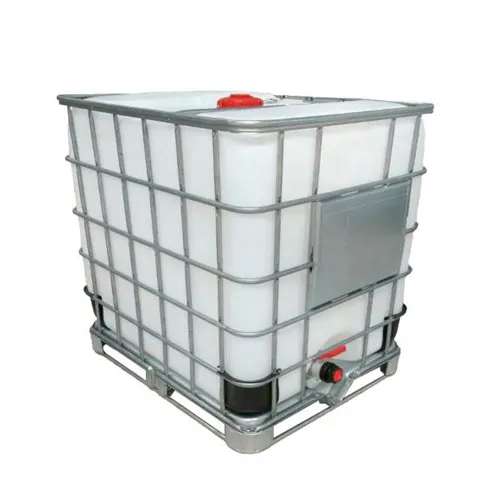
Hegrecat PMDETA vs. Standard Amine Catalysts: A Comparative Analysis
Performance Comparison
As the chart illustrates, when benchmarked against standard or lower-purity amine catalysts, Hegrecat PMDETA consistently delivers superior performance. Its higher catalytic efficiency means formulators can use less catalyst to achieve the same reaction speed, leading to direct cost savings and a cleaner final product with lower VOC emissions and reduced potential for amine odor.
Versatile Application Scenarios
The robust properties of Hegrecat PMDETA (Pentamethyldiethylenetriamine) CAS: 3030-47-5 make it an indispensable tool across various sectors of the polymer industry.
Rigid Polyurethane Foams
Use Case: Thermal insulation boards, spray foam insulation (SPF), refrigerator and freezer insulation. Advantage: PMDETA's high activity promotes fast curing, essential for continuous lamination lines and spray applications. Its excellent flowability ensures uniform density in appliance insulation, maximizing energy efficiency (R-value).
Flexible Polyurethane Foams
Use Case: Automotive seating, furniture cushioning, mattresses. Advantage: Used as a co-catalyst, it helps to fine-tune the reaction profile, ensuring open-cell structures for good breathability and comfort while maintaining rapid cure cycles for high-volume production.
Epoxy Resin Systems
Use Case: Curing agent and accelerator for epoxy adhesives, coatings, and potting compounds. Advantage: It significantly accelerates the curing of epoxy resins, even at ambient temperatures, reducing production bottlenecks. It is highly effective in applications requiring fast setting times.
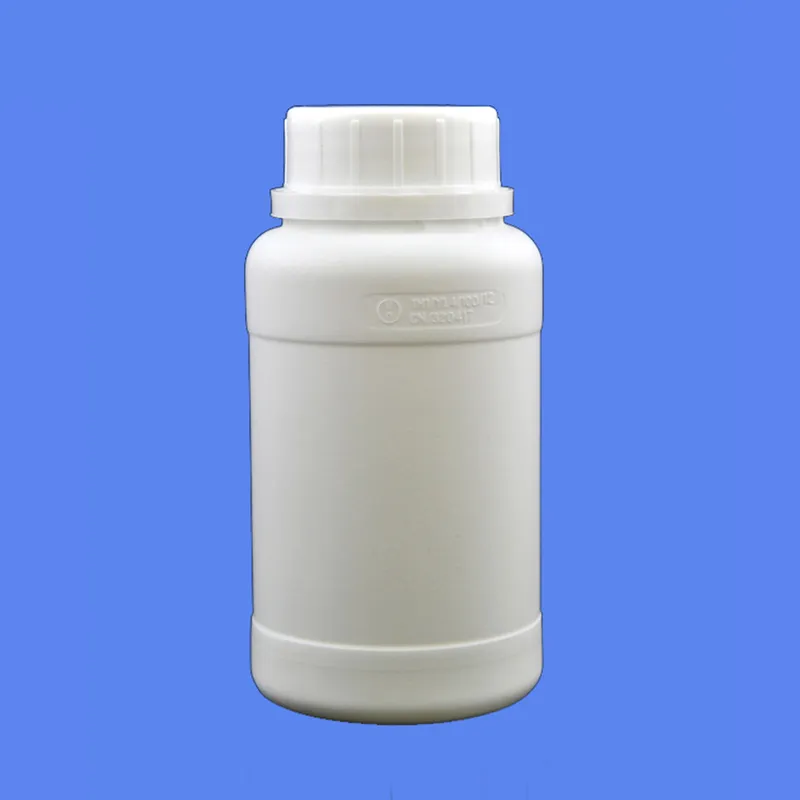
Customized Solutions & Technical Partnership
At Hejia Chemical, we understand that one size does not fit all. Our relationship with clients goes beyond supplying a product; we act as technical partners to help you optimize your formulations.
Our Value-Added Services:
- Catalyst Blends: We can create customized blends of Hegrecat PMDETA with other amine or organometallic catalysts to achieve a specific reaction profile tailored to your equipment and end-product requirements.
- Formulation Support: Our experienced technical team can provide guidance on optimizing catalyst loading, adjusting polyol/isocyanate ratios, and troubleshooting common foam defects.
- Flexible Packaging & Logistics: We offer packaging options from small lab samples to 200kg drums and 1000kg IBC totes, with a reliable global logistics network to ensure timely delivery.
Real-World Success: Application Case Studies (Experience & Trust)
Case Study 1: Enhancing Production Speed for a Leading Appliance Manufacturer
Client: A major European refrigerator and freezer manufacturer.
Challenge: The client was facing a production bottleneck in their cabinet foaming line. Their existing catalyst system required a long demold time, limiting the line speed and overall output.
Solution: Our technical team worked with the client to replace a portion of their slower gelling catalyst with Hegrecat PMDETA. We helped them titrate the optimal level to balance flowability with cure speed.
Result: By incorporating Hegrecat PMDETA (Pentamethyldiethylenetriamine) CAS: 3030-47-5, the client successfully reduced their demold time by 18%. This directly translated to a 15% increase in production line throughput without any capital investment in new machinery. They also reported improved foam density distribution in complex cabinet corners.
Case Study 2: Improving Surface Quality in Spray Foam Insulation (SPF)
Client: A North American supplier of residential and commercial spray foam insulation systems.
Challenge: The client's fast-reacting SPF system suffered from surface "popcorn" and friability, especially in colder application temperatures, leading to customer complaints and costly callbacks.
Solution: We recommended a catalyst package that included Hegrecat PMDETA as the primary gelling catalyst. Its ability to maintain liquidity slightly longer at the start of the reaction allowed for better surface wetting and leveling before the foam rapidly cured.
Result: The new formulation exhibited a smoother, more durable surface finish with a significant reduction in friability. The client saw a 40% decrease in quality-related complaints and was able to market their product as a premium, "smooth-finish" SPF system, enhancing their brand reputation.
Frequently Asked Questions (FAQ)
1. What is the primary role of Hegrecat PMDETA in polyurethane foam?
Hegrecat PMDETA is a highly active tertiary amine catalyst. Its primary role is to accelerate the two main reactions in PU foam formation: the gelling reaction (isocyanate + polyol → urethane) and the blowing reaction (isocyanate + water → urea + CO₂). It is a particularly strong gelling catalyst, which means it rapidly builds the polymer network, leading to faster cure and demold times.
2. How does the molecular structure of PMDETA affect its catalytic activity?
PMDETA's structure (N,N,N',N'',N''-Pentamethyldiethylenetriamine) features three nitrogen atoms. These nitrogen atoms have lone pairs of electrons that catalyze the reactions. Crucially, the methyl groups attached to the nitrogens are small, resulting in low "steric hindrance." This makes the catalytic sites highly accessible to the reacting molecules (isocyanates and polyols), leading to its exceptionally high activity compared to catalysts with bulkier groups.
3. What are the recommended storage conditions for Hegrecat PMDETA?
To ensure its 24-month shelf life, Hegrecat PMDETA should be stored in its original, unopened container111 in a cool, dry, and well-ventilated area away from direct sunlight and moisture. The container111s should be tightly sealed, preferably under a nitrogen blanket, as tertiary amines can slowly absorb atmospheric CO₂ and water, which can affect their activity over time.
4. Is Hegrecat PMDETA compatible with other amine and organometallic catalysts?
Absolutely. In fact, PMDETA is often used in synergistic blends. It can be combined with blowing catalysts (like BDMAEE) to achieve a balanced reaction profile, or with tin or other metal catalysts to fine-tune the back-end cure. Our technical team can help you design the optimal catalyst package for your specific application.
5. What is a typical dosage level for Hegrecat PMDETA in a rigid foam formulation?
The typical dosage level varies depending on the system, desired reactivity, and other catalysts used. However, a common starting point for rigid foam is between 1.0 and 2.5 parts per hundred parts of polyol (PHP). We always recommend starting with lab-scale trials to determine the optimal concentration for your specific formulation and processing conditions.
6. What safety precautions should be taken when handling PMDETA?
PMDETA is a corrosive liquid and a strong amine. It is essential to handle it with appropriate Personal Protective Equipment (PPE), including safety goggles, chemical-resistant gloves (e.g., nitrile or neoprene), and protective clothing. Work should be conducted in a well-ventilated area. Please refer to our Safety Data Sheet (SDS) for complete handling and first-aid information.
7. How does Hejia Chemical ensure batch-to-batch consistency?
Consistency is paramount. We achieve this through three key pillars: 1) Strict incoming QC on all raw materials. 2) A highly automated manufacturing process (DCS) that eliminates process variables. 3) Rigorous final Quality Control testing (GC, moisture analysis) on every single batch. Each shipment is accompanied by a Certificate of Analysis (COA) that guarantees the product meets our tight specifications.
Partner with Hejia Chemical for Unmatched Performance
Elevate your polyurethane and epoxy systems with the proven power and consistency of Hegrecat PMDETA (Pentamethyldiethylenetriamine) CAS: 3030-47-5. Contact our expert team today to request a sample, receive a quote, or discuss your specific formulation challenges.
Request a Quote or SampleFurther Reading & Authoritative References
- Polyurethane Chemistry and Technology: A foundational text outlining the mechanisms of amine catalysis. Szycher, Michael. Szycher's Handbook of Polyurethanes. CRC press, 2012.
- Journal of Applied Polymer Science: "Kinetic studies on the role of tertiary amine catalysts in the reaction of phenyl isocyanate with 2-ethylhexanol." This type of research underpins the understanding of catalyst activity. (Example reference, specific articles can be found on the journal's website). Wiley Online Library.
- ISO 9001:2015 - Quality management systems: The international standard that specifies requirements for a quality management system (QMS), which our manufacturing process adheres to. International Organization for Standardization (ISO).
- Industry Discussion on Amine Catalysts: Professional forums often contain practical discussions on the use of catalysts like PMDETA in various applications. An example is the Polyurethane Foam Association's technical resources section. PFA.org.

